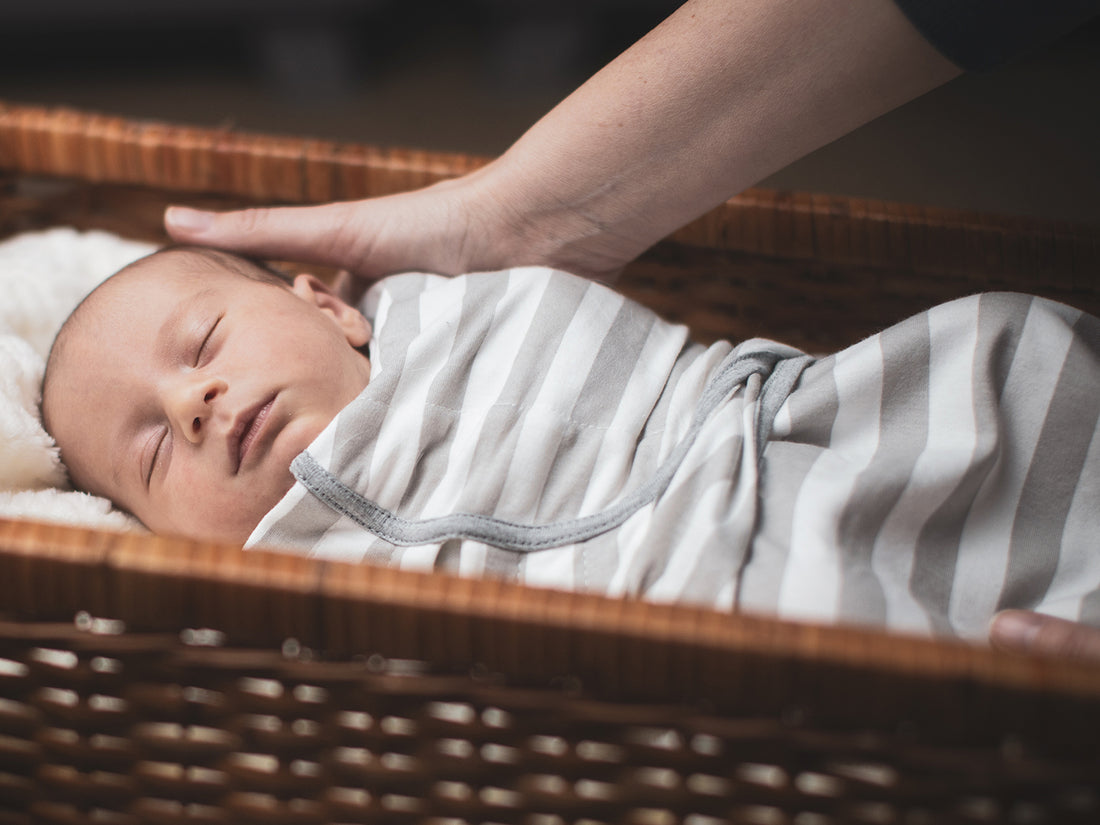Calm, safe and snugly tucked in — swaddling is a sleep wrapping technique with many benefits for parents and newborns. So let’s jump into the cosy world of swaddling — from a step-by-step guide to what they could mean for parents and babies.
What Are the Benefits of Swaddling?
Safer sleep
Practised since ancient times, swaddling is used to soothe newborns by tightly wrapping them in fabric, creating a womb-like environment. Not only does this have a calming effect, but it also helps with safe sleep by keeping the babies securely on their backs.
Fewer reflex reactions
Another plus of swaddling is that it can also prevent a child's startle reflex from waking them up. Known as the Moro reflex, this occurs most often when a baby has heard a noise or been disturbed, but sometimes this can happen when moving. It is said that when this happens, the baby feels like they are falling, which causes them to jump and be alarmed. Swaddling can help ease the Moro reflex, resulting in deeper or longer sleep.
Cuddled by cotton
It has also been suggested that swaddling can mimic the feeling of being cuddled or held, which is crucial for a baby’s development. Potential benefits of having some extra cuddle-time during sleeping hours include healthy weight gain and growth.
Want to see our range of Little Seeds’ organic cotton swaddles? See more here.
How to Swaddle a Baby
Safe swaddling requires the baby's body, up to their shoulders — but not their head or neck — to be wrapped. This can be done by carefully folding each corner of the swaddle blanket around, tucking the baby in on each side, but still leaving about two or three fingers worth of space between the baby and the blanket. It is also crucial to make sure plenty of room is left for the legs to sprawl as they naturally would.
Newborn babies cannot fully regulate their body temperature, so there are a few things to consider. Firstly, ensure the blanket is made from a breathable fabric such as organic cotton, and check what the baby should wear underneath their swaddle. Be sure to seek professional healthcare advice to talk through any aspect of these methods and make sure they are right for the baby.
There are two types of swaddle blanket: traditional and easy-to-use.
A Step-By-Step Guide for Traditional Swaddle Wraps
- Lay out the swaddle blanket with the corners facing north, south, east and west, and fold down what would be ‘north’ so that the point meets the centre.
- Carefully place the baby in the centre so that their shoulders align with the straight blanket edge.
- Hold the baby’s arm by their side as you fold the right-hand corner over, and tuck underneath the baby.
- Fold the bottom above to rest upon the baby's legs — but leave plenty of space at the bottom so that their legs and hips can move completely naturally and freely.
- Hold the other arm down into place by their side and carefully fold the left corner around and tuck around the right of the baby.
- Double-check no fabric is around the neck or head.
For a visual guide, check out our Little Seeds swaddle instructions, or watch our swaddling blanket how-to video here.
Babies can be swaddled until they can roll onto their front. By the time they look like they will soon be able to roll, it is likely they will no longer be woken by their startle reflex, so swaddles can be used with arms out if desired.
What about Easy-To-Use Swaddles?
Those who would rather leave the hard work to the blanket itself can opt for easy-to-use swaddle blankets. Self-fastening and easily adjusted, they create the same snug and secure environment as traditional baby swaddle blankets, but without the need for the traditional wrapping technique.


